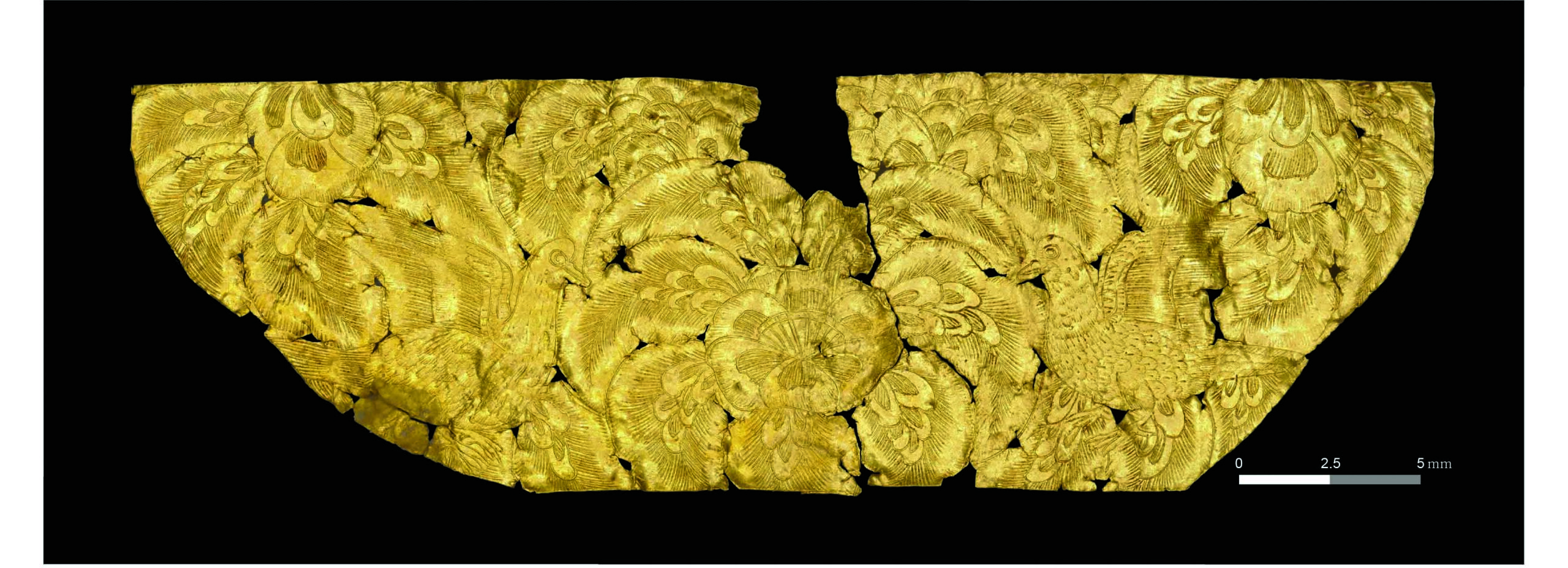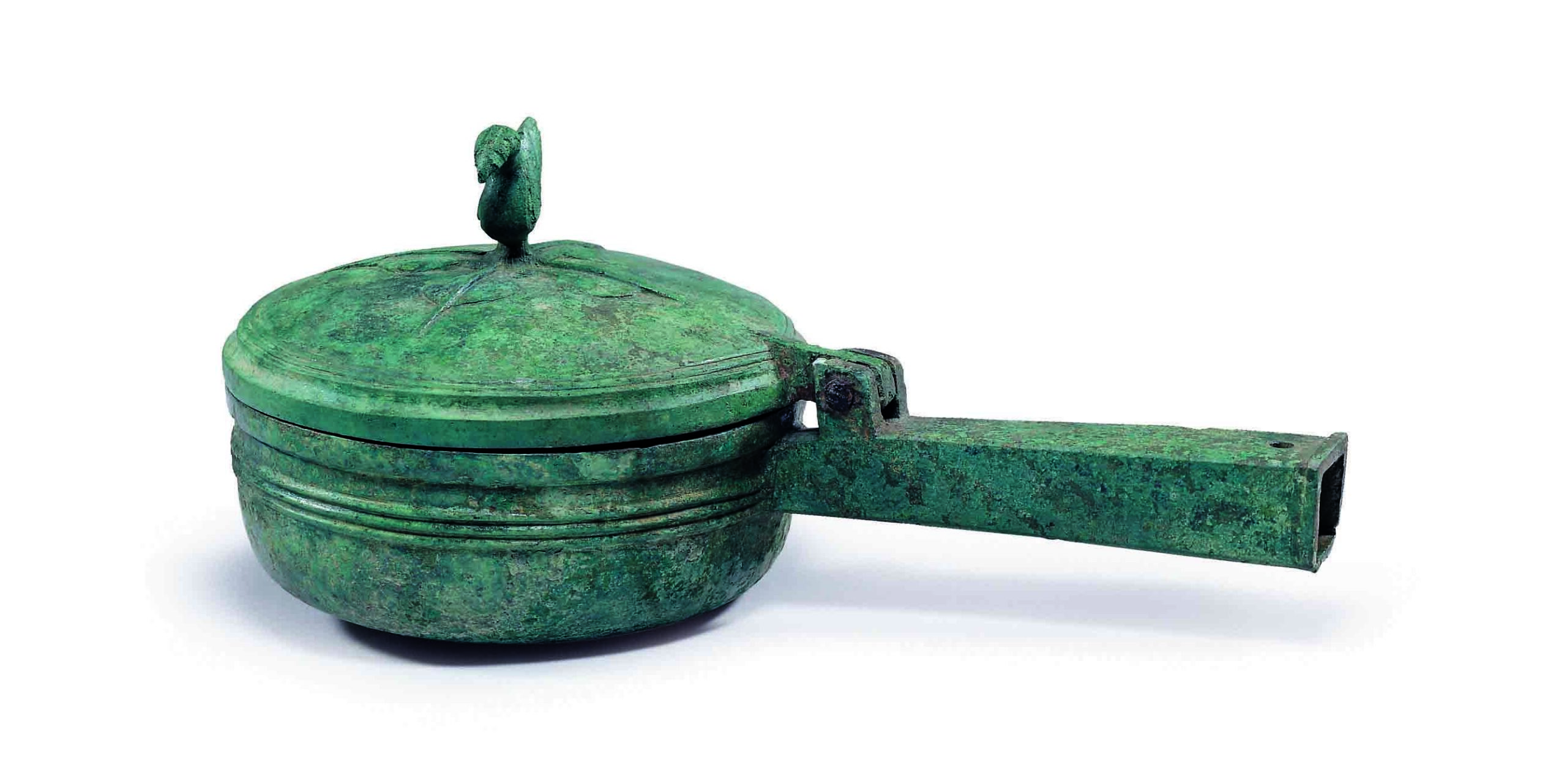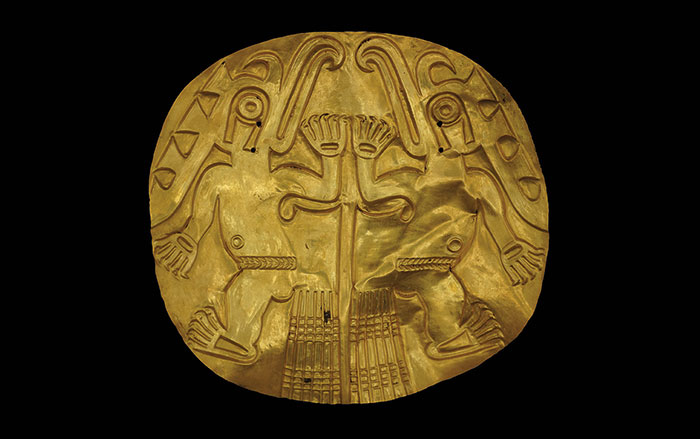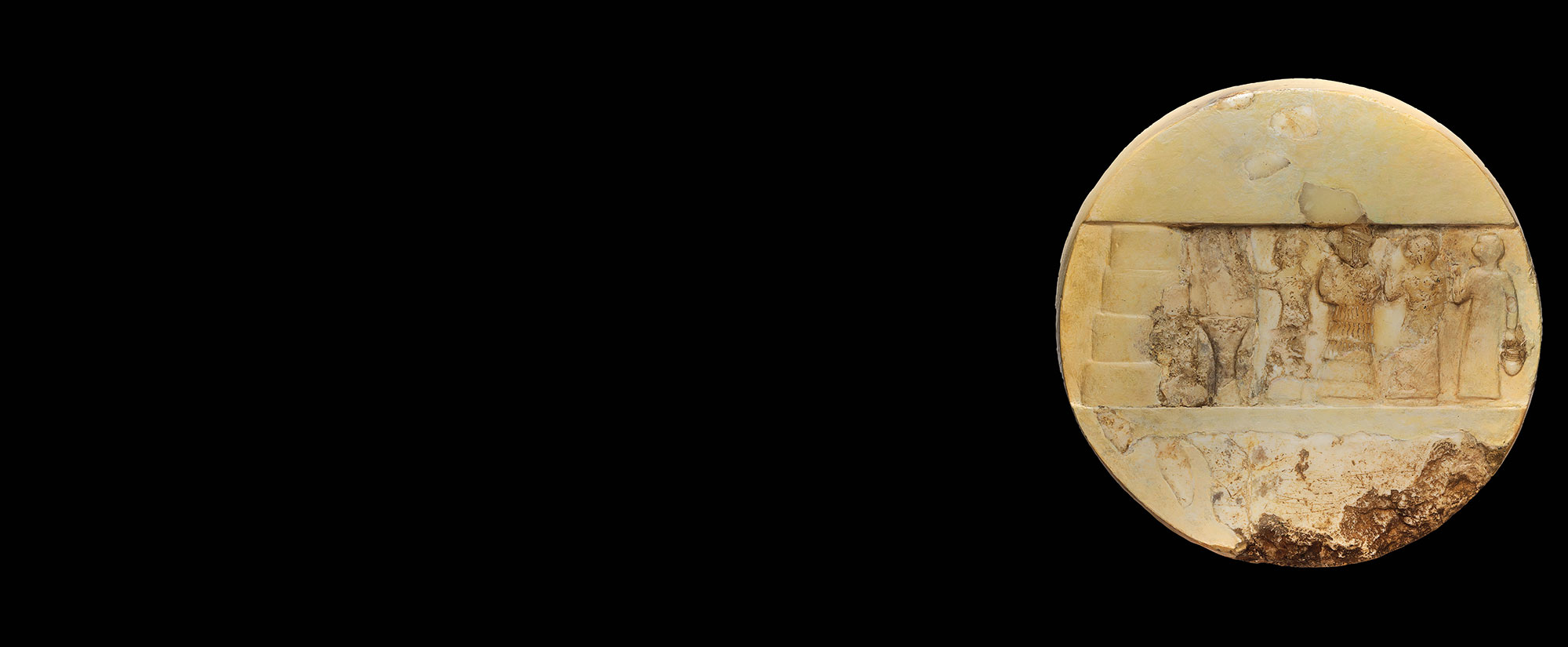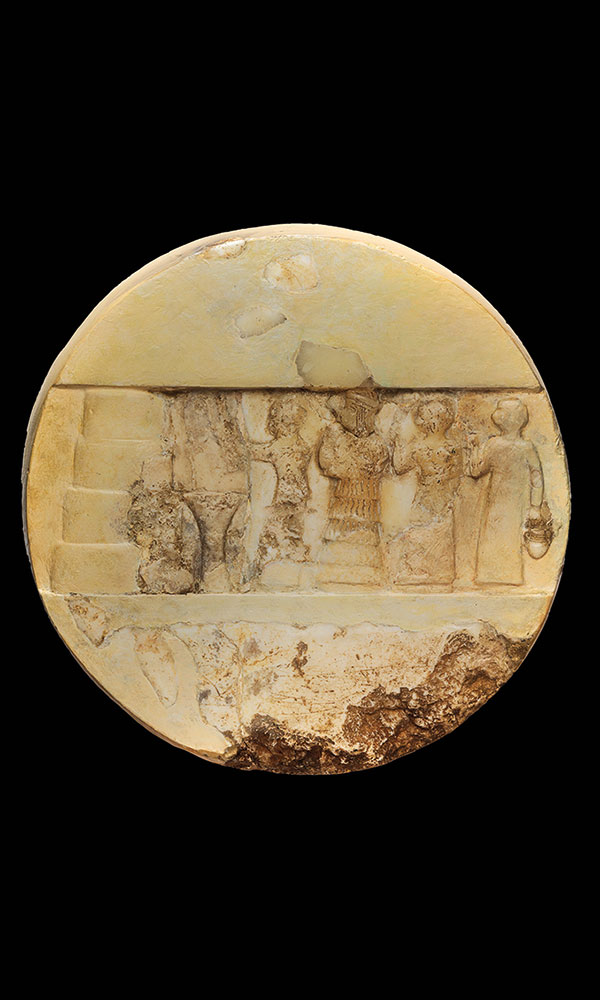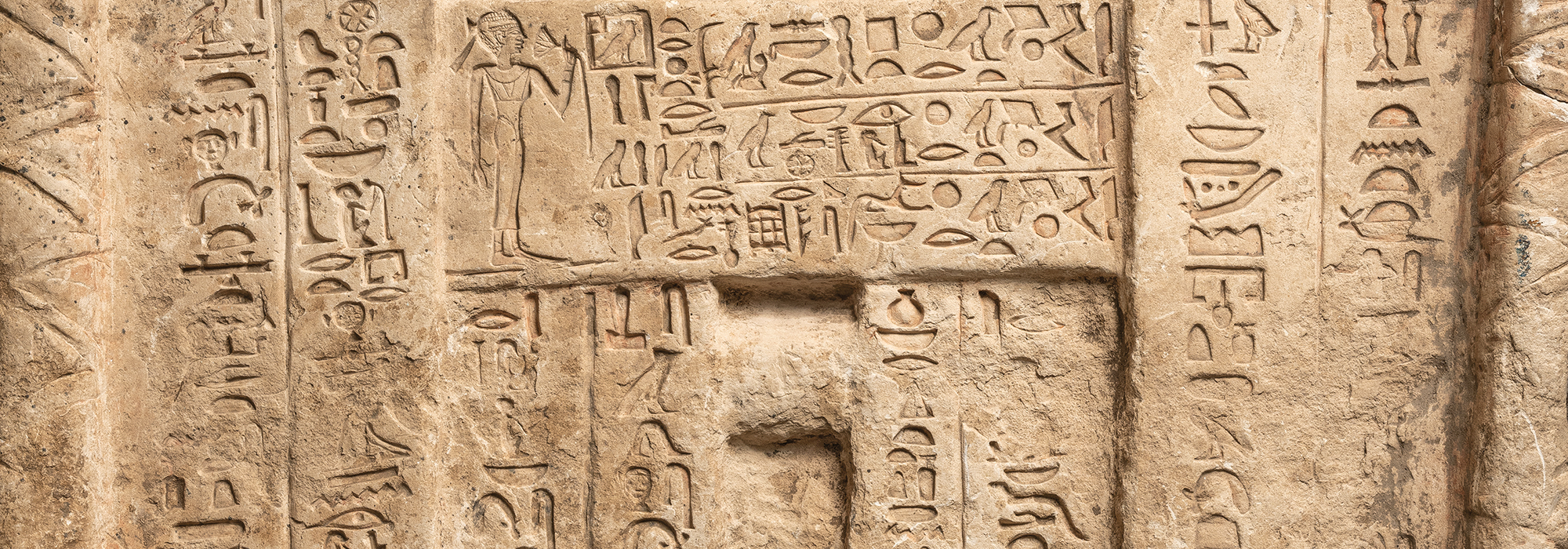
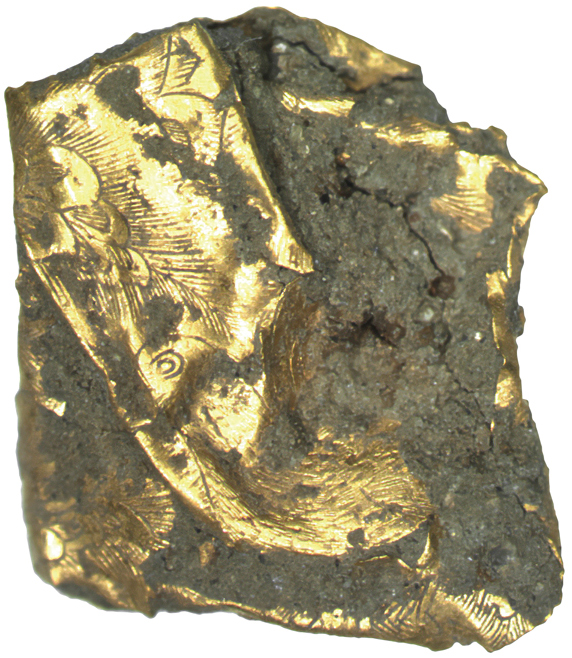
Two separate pieces of a delicate artifact about the size of a small paperclip that was first discovered at the site of a Silla Dynasty (57 B.C.–A.D. 935) royal palace in the South Korean city of Gyeongju in 2016 have now been conserved and reunited. The complete object was made of one one-hundredth of an ounce of 99.9 percent pure gold. It measures 1.4 inches by 0.5 inches and is thinner than a piece of paper. On this microscopic canvas, eighth-century A.D. Silla artisans carved lines thinner than a strand of hair to portray spectacularly detailed flowers seen from above to accentuate their fully bloomed petals. Amid the flowers is a pair of symmetrical birds facing each other.
The two pieces of the artifact were found about 65 feet from each other, both crumpled into tiny balls. It was only when researchers unfolded and flattened and then examined them under a microscope that they realized the fragments belonged to a single object. The artifact’s purpose remains unknown. To see a detail of a finely engraved flower on the artifact, click here.


